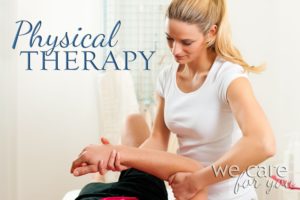 It’s been 7 weeks since my shoulder slammed into the wooden floor of the dance studio. It’s been nearly four weeks since I’ve seen the doctor and I’m looking for reassurance that I hadn’t done any harm doing my passive physical therapy directed exercises. Once or twice a day I’ve held a pulley fastened to the back of a door with both hands, and moved my injured hand up and down using the strength in my good arm. I’ve stretched my arm along a tabletop, powering that movement by leaning forward with my upper body. I’ve very carefully followed all the directives of the doctor and the physical therapist, but when I get into the room where the technician is to take the x-rays, she begins moving my body in ways that I have not been moving it.
It’s been 7 weeks since my shoulder slammed into the wooden floor of the dance studio. It’s been nearly four weeks since I’ve seen the doctor and I’m looking for reassurance that I hadn’t done any harm doing my passive physical therapy directed exercises. Once or twice a day I’ve held a pulley fastened to the back of a door with both hands, and moved my injured hand up and down using the strength in my good arm. I’ve stretched my arm along a tabletop, powering that movement by leaning forward with my upper body. I’ve very carefully followed all the directives of the doctor and the physical therapist, but when I get into the room where the technician is to take the x-rays, she begins moving my body in ways that I have not been moving it.
“Put your arm all the way across your body,” she says and I can’t do that without it hurting. When I tell her that she says she’s trying to get the angle that the doctor wants to see. I’m thinking if we are going to compare the images from before, why would it be necessary for me to do something I couldn’t possibly have done before? I refrained from asking that question, but I did suggest that she and the physical therapist might need to get together.
Apparently it worked out and the doctor got what he needed. He pointed out on the image that the bones of my shoulder are still in place and showing some signs of healing. This was a great relief to me but my husband, who was accompanying me, was eager to know more.
“What percentage is she healed, would you say?”
The doctor smiled, “Everybody wants percentages.”
My husband smiled back and stood quietly waiting for his answer.
“I’d say 40 percent.”
“When can she drive?” my husband asked, with quite a bit of eagerness in his voice. I already knew my not driving was a big drag for both of us.
“It’s a liability issue,” the doctor said. “People do sue, and I can’t protect you from that.”
“The physical therapist told me I have no strength in that arm. If I had to turn the wheel quickly, it could be dangerous,” I said.
“There are people who drive with one hand but they take a people with disabilities drivers’ training course in order to do so. The problem with that is there’s a six-month waiting list for the class. The doctor gave his advice as he exited.
“I’d suggest, drive when you feel ready. We’ll add resistance training to your physical therapy regime and I’ll see you in six weeks.”
It’s clear there will be no short cuts on this journey, six weeks will take us pretty close to the end of the summer. But I am grateful for the recovery I have gotten. I’m able to dress myself, put contacts in and out, tie my shoes. I’m grateful that I have access to excellent physical therapists, the discipline to practice the exercises they are teaching me, and for the special bonus of being able to walk to the physical therapy office from my house.Now if I can master using Uber, I’ll be able to move about the city.

